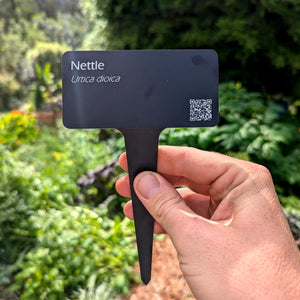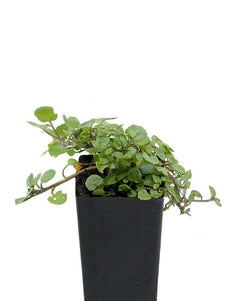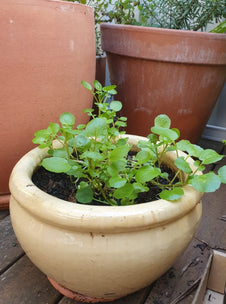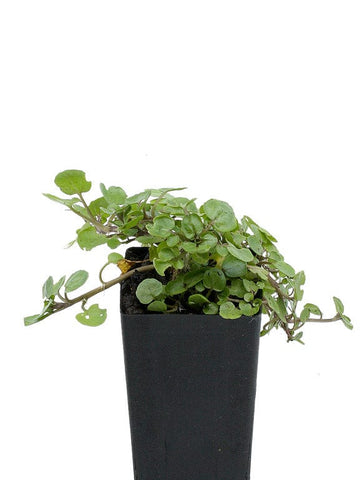





Watercress
Watercress

- In stock, ready to ship
- Inventory on the way

Usually available: March to December
Life cycle: Perennial
Height: 20cm
Position: Part shade
Soil preference: Moist
This is how we pack and send your Herb Plants to all states except TAS & WA
You will receive
- 1 Watercress Herb Plant in a 50 X 75mm tube - General growing instructions
All of our Herb Plants are grown organically with certified organic potting mixes and fertilizers
Botanical Name: Nasturtium officinale
Watercress is a low, spreading perennial, to about 20cm high. It has round, dark green leaves with a red-brown tinge, and red veins that spread from the short, fleshy red stem. These pinnatifid leaves are made up of several, ovate heart shaped leaflets with the terminal leaflet being larger than the others. The small, white flowers form in summer. This plant should not be confused with the common garden nasturtium, called Indian cress or true nasturtium in some regions of the world. This plant has larger leaves, large orange-red flowers and a creeping habit.
The original habitat of watercress is in Europe and in particular, may have moved from Russia throughout the rest of Europe. Eventually watercress made its way to Northern Africa, North America and the Caribbean. Early European migrants helped the transit of watercress to North America, by taking it to protect against scurvy due to the high vitamin C content. Early Romans and Greeks believed watercress enhanced brain functioning. Later, in Medieval Europe, watercress was used as a salve for sword wounds.
Today, watercress sees more use as a culinary herb. Due to television chefs, it has seen a revival in recent years.
Growing Conditions
Watercress is a water loving plant and it is happiest in cool, flowing water with good access to organic material. However, since most people lack a stream in their back yard, there are some alternatives. Watercress likes warmth, but an ideal garden position is a damp area with moist, rich soil and a shady aspect. Watercress does well in warm, moist conditions and does not do well in areas susceptible to frosts. Protection form wind and frosts is advised, so container growth may be a good choice.
Some people like to create a pond or boggy effect in the garden or use watercress as a real fishpond plant. You can create a pot with water flow, still water that is changed frequently or a use a clay pot set in a tray of water. The most important thing is not to let the water dry out or stagnant, so empty and refill regularly. Alkaline conditions, pH 7-7.5, are preferred by watercress.
Watercress grows naturally in water, but when potting the plant up use a good organic mix and keep well watered or place in a water environment. Watercress can be susceptible to fungal diseases that cause rotting of stems or leaves. Remove the affected plants and check for causes like stagnant water.
Propagate watercress by sowing seed into a tray during spring. Plant seedlings out when they are about 8 cm tall. The plants can be divided and placed in the garden, or pots, as recommended above. Natural propagation of watercress occurs via the plants setting root wherever they flow downstream. In the garden, if soil conditions are right, watercress will grow wherever the roots can take hold.
Culinary Uses
Watercress has seen a recovery in recent years, whereas in the recent past it was often used as an uneaten garnish on meals. All parts of the plant can be used, raw or cooked and impart a spicy, peppery taste. The leaves may be used fresh in salads, sandwiches and garnishes. Alternatively, they may be used cooked in casseroles, stews or soups and in butters, spreads and sauces. Watercress is very popular in Asian cuisine.
Medicinal Uses
Watercress is high in vitamins and minerals so there is a general health benefit from using watercress in meals on a regular basis. Although the Western world uses watercress in meals, the Eastern world continues to use watercress for its health benefits. For example, watercress soup in Asian cuisine is seen as beneficial for mouth health, protecting against gingivitis, ulcers, swollen gums and general health. Watercress is also viewed as being useful in the recovery period after illness, or colds and flu due to the high vitamin and mineral content.
Watercress has anti-viral, anti-bacterial, anti-pyretic, is a potent diuretic, benefits arthritis sufferers, helps dermatitis and eczema, and has expectorant qualities to help respiratory illness.
All information provided on this website is for informational purposes only. Please seek professional advice before commencing any treatment.






